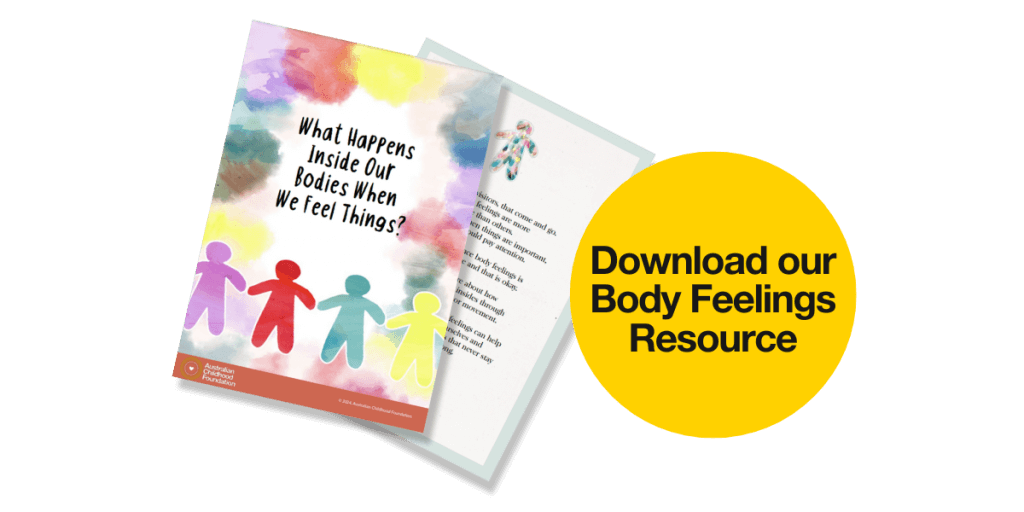
What happens inside our bodies when we feel things?
‘What happens inside our bodies when we feel things?’ blog article was written by Chris Cussen, Lead of Product Development, Content Creation, and Projects for Therapeutic Services at Australian Childhood Foundation.
Do you know Dr. Seuss’s picture book, My Many Coloured Days?
It is wonderful. He wrote the text for this story in 1973 with the language of feelings, movement, and bodily sensations in mind. It encourages children to think about what happens in their bodies when they feel things. Dr. Seuss died five years before this picture book was made.
His widow found his manuscript and took it to the publisher. It is now widely used and loved by those working therapeutically alongside children.
Many of us could do with more invitations to check in with what is happening in our bodies. How often do we really tune into what our bodies know and need? Our bodies are smart, perpetually present parts of ourselves that track what happens to us.
It is our bodies that often know things before we are ready for our minds to know the fuller picture. As Bessel van der Kolk recognised in his seminal work, ‘our bodies keep the score.’
Pat Ogden has helped us understand that by describing bodily sensations, children expand their perception and processing of ‘body feelings’ in much the same way as we help children find words to describe and process emotions.
She and others have developed methods and practices for helping children observe and track bodily sensations until the moment the sensation and physical impulses have stabilised.
At a foundational level, tuning into our bodies can help us practice becoming familiar with the language of the body. We can get in touch with bodily sensations, movements, and sensory experiences.
Our bodies are open 24/7, always there for us.
Our exploration of what lies within and around us can be gentle and commenced whenever we are ready. For some children who have been severely hurt, that might be with professional help; for most, it is never too early to encourage children to befriend their bodies and to listen out for what they have to tell us.
We have developed an e-book encouraging children to explore a bit more about what happens in our bodies when we feel things. We have used the term ‘body feelings’ to help children learn more about sensations that arise in their bodies.
We recognise these ‘body feelings’ as visitors within our growing and shifting bodies that never stay the same for too long.
We have offered up descriptions of ‘body feelings’ and the wonderful illustrator Jess Racklyeft has translated these into examples of body shapes and representations of what these ‘body feelings’ seem like to her.
You are invited to try on some of the ‘body feeling’ words and see what they mean for your body as you consider them.
Alternatively, what is it like to consider some of the body shapes and colours that Jess painted for this piece? Or even more simply, what ‘body feelings’ do you notice if you tune into your body right now? Where do they show up? In what way are they present? Are they moving in any way?
This piece could be printed out and read like a story or printed out as a series of posters, including one poster that offers a range of ‘body feeling’ words (the list is by no means exhaustive).
You could also use much of this printed-out piece as an A5-sized frieze for the wall for children to add their own ‘body feelings’ pictures to.
Learning more about ‘body feelings’ can help highlight when things are important to pay attention to, and it can help us know more about ourselves and our amazing changing bodies that never stay the same for too long.
Subscribe to the Professionals Newsletter
Join our community of more than 40,000 professionals from around the world who receive our weekly newsletter containing articles. Our newsletters help connect you to our blog, research, and free resources as they are produced. We also keep you informed on training opportunities including access to experts in the field, webinars, international speaker tours, conferences and more.

